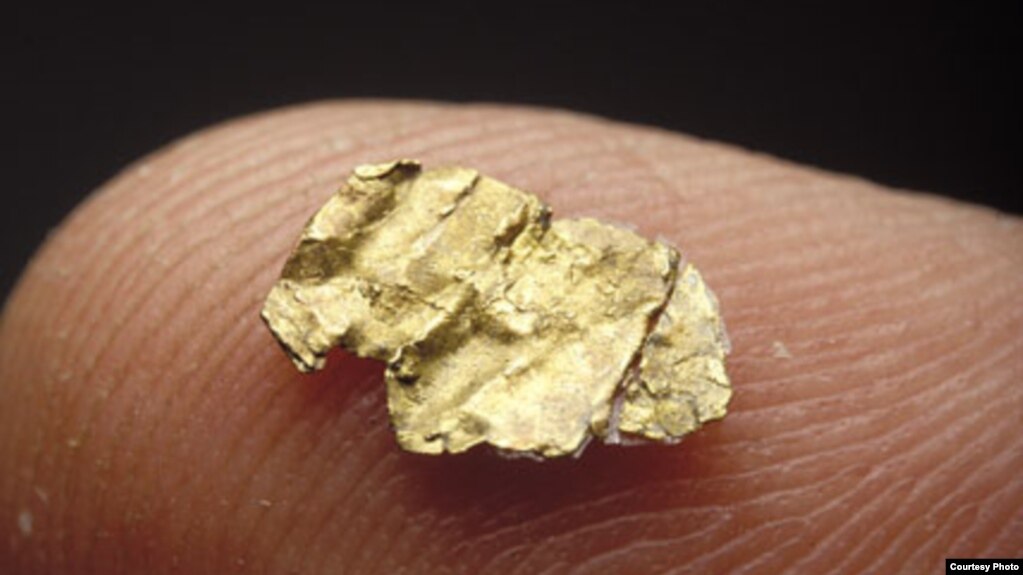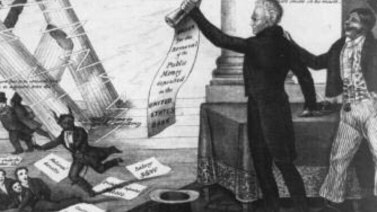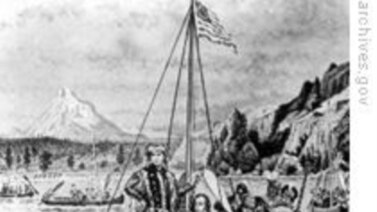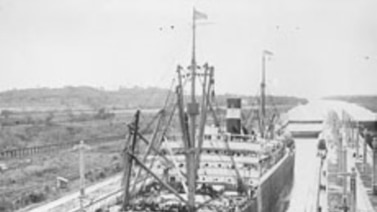
From VOA Learning English, this is The Making of a Nation. I’m Kelly Jean Kelly.
And I’m Christopher Cruise.
In 1847, California became a US territory. Most Americans at the time lived on the East Coast. But thousands traveled west to California after a settler reported finding gold there.
James Marshall found the gold nugget in January 1848. Mr. Marshall was building a sawmill near the American River in central California. When he looked in the water, he saw shiny pieces of metal. One of them was about the size of a fingernail. Mr. Marshall took the piece and put it in his mouth.
Paul Johnston is curator of Maritime History at the Smithsonian’s Museum of American History here in Washington, D.C. The museum displays the gold nugget Mr. Marshall found.
“And you can see Mr. Marshall actually bit down on it. You can see the molar marks, his bite mark on it as well a little chip taken out of the upper left hand corner for assaying, or testing the purity of the gold.”
Mr. Marshall knew he found gold because the metal was soft. He and his boss gave the nugget to the US government to prove they found gold on the land.
News of James Marshall’s discovery traveled to the East Coast. But communication was slow in the middle of the 19th century. People in the big eastern cities of New York and Boston heard only rumors about gold in California. It was not until December 1848, almost a year after Mr. Marshall’s discovery, that President James Polk told Congress the rumors were true.
During the next weeks and months, thousands of young men from the Northeast left their homes and families to seek great riches in California.
“You didn’t really have to work for it, as far as they knew. You just had to lean over and pick it up and you were rich.”
One of those young men was Benjamin Buckley. His records suggest he found thousands of dollars’ worth of gold. Buckley put some money in banks and sent some to family members.
Alexander Van Valen, however, was not as successful. The Smithsonian’s Museum of American History has letters he wrote to his wife and daughters in New York.
“His wife tried to make a living by sewing and borrowing money from the financiers against her husband’s future profits. But it wasn’t any easier for her than it was for her husband 3,000 miles away in California.”
In two years, Alexander Van Valen earned only $500.
Most people who traveled to California to find gold were like Van Valen – they did not get rich. But Paul Johnston says the California Gold Rush was important for other reasons.
“The Gold Rush really put California on the map. It made it desirable. It made the East Coast really want California to become part of the United States. So, it was huge.”
In 1850, California became the country’s 31st state.
I’m Kelly Jean Kelly.
And I’m Christopher Cruise.
This is The Making of a Nation from VOA Learning English.
Words in the News
fingernail (n.) - the hard covering at the end of your fingers
molar (n.) - a large tooth near the back of the jaw with a wide surface used especially for grinding food
nugget (n.) - a solid lump of a valuable metal (such as gold)
rumor (n.) - information or a story that is passed from person to person but has not been proven to be true
Now it's your turn to use these Words in the News. In the comment section, write a sentence using one or more of these words, and we will provide feedback on the use of vocabulary and grammar.





